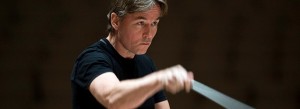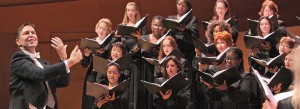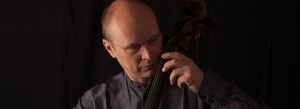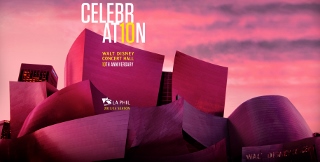A LASTING IMPRESSION
Fab Fin Esa-Pekka Salonen returned to the hall where he established the reputation of LA Phil, educated audiences to challenging new music, and garnered adulation for his graceful manner and acute interpretation of various works, classical and contemporary. The program this past weekend set the stage for Salonen to do as he has always done: breathe life to the old (Debussy’s Nocturnes), challenge with something new (Magnus Linberg’s Cello Concerto No. 2, a world premiere), and enthrall with a daunting work (Bartók’s Music for Strings, Percussion, and Celesta).
 The three-movement suite Nocturnes (composed 1897-1899) established the mood for the evening. During the fin de siècle, Debussy’s work stymied audiences with its chromatic, continually shifting tonalities and rhythms, but it was a precursor to both Bartók and Linberg. Nuages exquisitely expresses the “immutable aspect of the sky and the slow, solemn motion of the clouds” that Debussy himself wanted to express with the piece. The strings provided the ever-present airy bed upon which the wind instruments could themselves float upon; oboes danced like dust flitting about inside the clouds.
The three-movement suite Nocturnes (composed 1897-1899) established the mood for the evening. During the fin de siècle, Debussy’s work stymied audiences with its chromatic, continually shifting tonalities and rhythms, but it was a precursor to both Bartók and Linberg. Nuages exquisitely expresses the “immutable aspect of the sky and the slow, solemn motion of the clouds” that Debussy himself wanted to express with the piece. The strings provided the ever-present airy bed upon which the wind instruments could themselves float upon; oboes danced like dust flitting about inside the clouds.
 Fêtes showcased an incredible dynamic range from the town-clearing, full-fledged fortissimo to whisper-level, tranquil pianissimo. It was played so tremendously and with such supple precision that impressed audience members clapped prematurely before the finale, Sirènes. A dozen women plucked from the Los Angeles Master Chorale provided haunting, hypnotic oohs and ahs to Debussy’s richly textured piece. At the start, the Sirens’ voices ride over the ocean waves, and all sounds sweet and beautiful, but later the voices become buried within the ocean (the orchestral bed), just like the seduced man who is unfortunately tossed by these alluring creatures into the brutal world underneath the soft, soapy waves. So many different colors and flourishes throughout, the ocean is presented deep and wide, yet intimate and at times suffocating. The audience responded with abundant applause, and appropriately so for such a marvelous performance.
Fêtes showcased an incredible dynamic range from the town-clearing, full-fledged fortissimo to whisper-level, tranquil pianissimo. It was played so tremendously and with such supple precision that impressed audience members clapped prematurely before the finale, Sirènes. A dozen women plucked from the Los Angeles Master Chorale provided haunting, hypnotic oohs and ahs to Debussy’s richly textured piece. At the start, the Sirens’ voices ride over the ocean waves, and all sounds sweet and beautiful, but later the voices become buried within the ocean (the orchestral bed), just like the seduced man who is unfortunately tossed by these alluring creatures into the brutal world underneath the soft, soapy waves. So many different colors and flourishes throughout, the ocean is presented deep and wide, yet intimate and at times suffocating. The audience responded with abundant applause, and appropriately so for such a marvelous performance.
 Linberg’s Cello Concerto No. 2 retains the dissonance and tone clusters that permeate through the majority of new music, with sequences climaxing at an alarming interval or chord, like a beast unnerved, touched with that awful demon of aggression. Cello soloist Anssi Karttunen slashed through the overwhelming tenuous atmosphere with feral fearlessness. Whether sliding his long fingers along the neck bowing perfect fifth intervals or viciously cutting through hurried staccato passages, the ominous, intimidating nature of the work was made manifest by Karttunen’s tenacious playing. When the last few notes fade away, it’s as if Linberg has allowed his beast to find peace – his primal appetite now satiated (at least for this moment). It was an excellently executed performance of a stirring work.
Linberg’s Cello Concerto No. 2 retains the dissonance and tone clusters that permeate through the majority of new music, with sequences climaxing at an alarming interval or chord, like a beast unnerved, touched with that awful demon of aggression. Cello soloist Anssi Karttunen slashed through the overwhelming tenuous atmosphere with feral fearlessness. Whether sliding his long fingers along the neck bowing perfect fifth intervals or viciously cutting through hurried staccato passages, the ominous, intimidating nature of the work was made manifest by Karttunen’s tenacious playing. When the last few notes fade away, it’s as if Linberg has allowed his beast to find peace – his primal appetite now satiated (at least for this moment). It was an excellently executed performance of a stirring work.
 Bartók deserves more of a renaissance and praise in North America similar to the reverence the Europeans have given him for his impact on both popular music and film and television scores: Artists like Radiohead and Nine Inch Nails, and composers such as James Newton Howard and Bernard Herrmann borrow a great deal from his work. When I heard Music for Strings, Percussion, and Celesta, I was struck by the similitude shared by Howard’s score for Alien and Herrmann’s compositions for Vertigo and The Twilight Zone in particular. The albums Kid A (Radiohead) and The Downward Spiral (Nine Inch Nails) owe their dissonant and left-turn jarring success to the templates and innovations provided by Bartók. The strings’ swirling, descending spirals meet with the percussive bow hits, and timpani glissandi make for a tempestuous and thrilling aural experience, shedding more light on this Hungarian’s exceptional mastery of polyrhythmic and polyphonic structures.
Bartók deserves more of a renaissance and praise in North America similar to the reverence the Europeans have given him for his impact on both popular music and film and television scores: Artists like Radiohead and Nine Inch Nails, and composers such as James Newton Howard and Bernard Herrmann borrow a great deal from his work. When I heard Music for Strings, Percussion, and Celesta, I was struck by the similitude shared by Howard’s score for Alien and Herrmann’s compositions for Vertigo and The Twilight Zone in particular. The albums Kid A (Radiohead) and The Downward Spiral (Nine Inch Nails) owe their dissonant and left-turn jarring success to the templates and innovations provided by Bartók. The strings’ swirling, descending spirals meet with the percussive bow hits, and timpani glissandi make for a tempestuous and thrilling aural experience, shedding more light on this Hungarian’s exceptional mastery of polyrhythmic and polyphonic structures.
Salonen’s sublime conducting manifested in the dynamic range of the orchestra; the sforzando moments appropriately jolted while the pianissimo passages were lyrical and sweet. The program’s selections meshed well together, though I would have preferred to hear the evening as a chronological experience from Debussy to Linberg. But, that’s a small trifle for the sumptuous truffle offered. An evening of blurred lines made for an impressionistic and impressive evening at Walt Disney Concert Hall, now celebrating its 10th anniversary.
Los Angeles Philharmonic
Esa-Pekka Salonen, conductor
Anssi Karttunen, cello
Women of the Los Angeles Master Chorale
DEBUSSY: Nocturnes
LINDBERG: Cello Concerto No. 2 (world premiere, LA Phil commission)
BARTÓK: Music for Strings, Percussion, and Celesta
scheduled to end on October 20, 2013
for LA Phil events and tickets, call 323.850.2000
or visit http://www.laphil.com/

